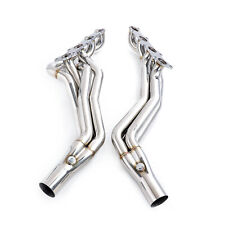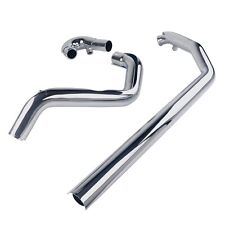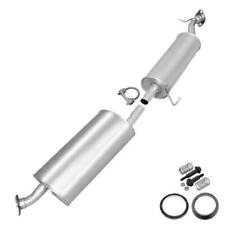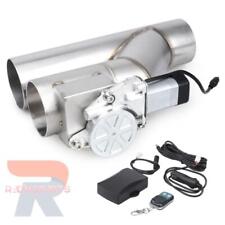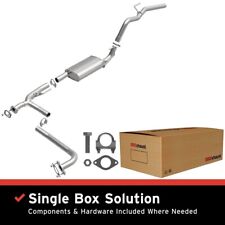GM opens doors to Global Battery Systems Lab in Michigan

General Motors today opened the doors to its 33,000 square feet battery research and development plant in Michigan. GM says that the facility will play a major part in accelerating its move to electric-vehicles such as the upcoming 2011 Chevrolet Volt.
Known as the Global Battery Systems Lab, the Warren, Michigan plant will be used to test and build lithium-ion batteries for GM vehicles.
GM CEO Fritz Henderson and Jennifer Granholm were at the opening ceremony for the plant, which will employ 1,000 engineers.
“The new global GM battery lab will benefit consumers across America by helping us advance the development of battery technology in the United States and put cleaner, more efficient vehicles on the road more quickly and affordably,” Henderson. “Our new lab improves GM’s competitiveness by speeding the development of our hybrid, plug-in and extended-range electric vehicles, including the Chevrolet Volt.”
GM said that it will use supply lithium-ion battery cells, electronic components and control hardware provided by LG Chem for the Chevrolet Volt.
———-
Press Release:
GM Opens Most Technologically Advanced Automotive Battery Lab In The United States
* Reinforces the New GM’s commitment to advanced technology leadership
* Will accelerate the domestic development of advanced battery technology and lead GM’s network of existing battery labs in Honeoye Falls, N.Y.; Warren, Mich.; and Mainz-Kastel, Germany
* Capable of testing all current battery systems, including lithium-ion, as well as new energy storage technologies such as ultracapacitors for GM’s extended-range electric, plug-in, hybrid and fuel cell vehicles
WARREN, Mich. – General Motors expanded its significant battery research and development capabilities today by opening the largest and most technologically advanced battery lab in the United States on its Technical Center campus here.
The new Global Battery Systems Lab will lead GM’s global advanced battery engineering resources and expedite the introduction of electrically driven vehicles, including the Chevrolet Volt, as well as plug-in hybrid and hybrid-electric vehicles and fuel cell vehicles.
“The new global GM battery lab will benefit consumers across America by helping us advance the development of battery technology in the United States and put cleaner, more efficient vehicles on the road more quickly and affordably,” said Fritz Henderson, GM president and CEO. “Our new lab improves GM’s competitiveness by speeding the development of our hybrid, plug-in and extended-range electric vehicles, including the Chevrolet Volt.”
The Global Battery Systems Lab spans 33,000 sq. ft. – four times larger than GM’s previous Tech Center battery lab – and will be used by GM’s growing team of more than 1,000 engineers working on advanced batteries and electrically driven vehicles.
Planning began in December 2007 and construction started in August 2008. Operations began in January – nine months ahead of schedule. The lab became fully functional in May, equipped with 160 test channels and 42 thermal chambers duplicating extreme real-world driving patterns, hot and cold temperatures and calendar life. The lab’s maximum power capacity is 6 megawatts, or enough electricity to provide power to approximately 1,400 homes.
“This facility is state-of-the-art and represents one of the largest and most capable battery test labs in the world,” said Jim Queen, GM group vice president, Global Engineering. “More than half of the lab is dedicated to testing the electrochemical battery cells and their enclosures, known as modules, a capability not available in GM’s previous battery lab. The lab’s remaining floor space is committed to evaluating completed battery packs.”
The Global Battery Systems Lab was built within GM’s Alternative Energy Center facility, and includes many environmentally friendly features such as a center hallway with high-efficiency LED lighting and a floor made from recycled tires. Approximately 90 percent of the electricity used for battery testing can be returned to the local energy grid for use by homeowners and businesses.
Additional new benefits offered by the Global Battery Systems Lab include a thermal shaker table for battery structural integrity testing, a battery teardown area for failure analysis and competitor benchmarking, an integrated test automation system and improved Design of Experiments methodology – an information-gathering exercise that allows GM to perform more thorough battery tests more quickly.
The Global Battery Systems Lab complements GM’s other battery labs in Mainz-Kastel, Germany, Honeoye Falls, N.Y., and the Warren Technical Center’s Research Chemical Engineering facility. The opening of the Global Battery Systems Lab is the latest move in GM’s comprehensive battery strategy, which includes ramping up “in-house” responsibility for advanced battery technology and a broad portfolio of supplier partners.
At the 2009 North American International Auto Show in Detroit, GM:
* Announced plans to establish the world’s first lithium-ion battery pack manufacturing plant operated by a major automaker in the U.S.
* Selected LG Chem to supply lithium-ion battery cells, electronic components and control hardware for the Chevrolet Volt
* Signed a joint engineering development contract with Compact Power and LG Chem to further expedite the development of the Volt’s lithium-ion battery technology
* Joined with the University of Michigan to create a new automotive advanced battery lab in Ann Arbor, Mich., and a specialized curriculum within U of M’s College of Engineering to develop automotive battery engineers.
Energy alternatives and advanced technologies that reduce dependence on petroleum, improve fuel economy and reduce emissions are keys to developing sustainable transportation. GM is pursuing several options to best meet the varied needs of customers around the world – from advanced gasoline, diesel and biofuel technology to electrically assisted vehicles such as hybrids, plug-in hybrids and – ultimately – electrically driven extended-range electric vehicles and hydrogen fuel cell vehicles. GM believes that electrically driven vehicles, based on battery and hydrogen fuel cell technology, offer the best long-term solution for providing sustainable personal transportation.
Facts: Global Battery Systems Battery Lab
Location
Alternative Energy Center, GM Technical Center, Warren, Mich.
Timing
* Battery system test area operational January, 2009
* Cell and module test area May, 2009
Size
Total floor space: 33,000 sq. ft.
* 14,400 sq. ft. – pack testing and development
* 17,400 sq. ft. – cell and module development
* 2,000 sq. ft. – technical support
Benefits
* Increased pack testing
o 32 cyclers (serve as treadmills for batteries)
o 64 test channels (available for individual battery tests)
o 25 thermal chambers (duplicates extreme temperature conditions)
* New cell and module testing
o 32 cyclers
o 96 test channels
o 16 small thermal chambers
* Environmental control capability – to allow for test correlation and repeatability
o New humidity-controlled walk-in chambers
o New air flow benches to provide specific temperatures and levels of humidity to test air-cooled battery packs
o New coolant chillers to cool or heat liquid-cooled battery packs
Enhanced capability
* Integrated test automation system enables around-the-clock standardized testing, customized test schedules and monitoring tests from desk or at home
* New thermal shaker table for structural integrity testing
* Improved Design of Experiments methodology – an information-gathering exercise that allows GM to perform more thorough battery tests in a shorter period of time
* Battery teardown area for failure analysis and competitor benchmarking
– By: Omar Rana


